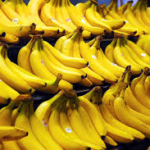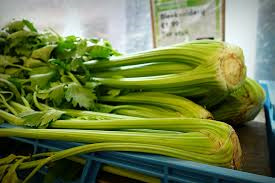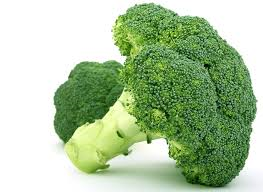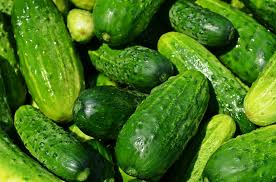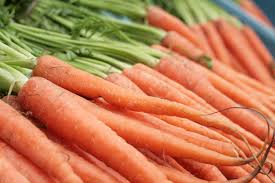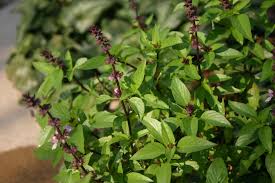Identifying Beneficial Insects and Garden Insect Pests
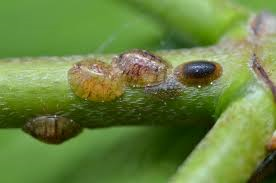
One of the many challenges that many homeowners and gardeners face is dealing with pests that not only invade but destroy our gardens. There is nothing more hurtful than laboring so hard to establish your dream garden by devoting weekend after weekend to give your yard a total makeover and in the midst of all that joy and excitement disaster strikes.
All of that hard work seems to be headed down the drain. Your lovely garden that was once the talk of the neighborhood is now nothing more than a thing of the past. Though all may seem hopeless, the good news is there is still a chance for recovery in the midst of your frustration.
Understanding Pests
One of the keys to pest control is to understand the conditions that cause them to thrive along with their life cycle. Garden insect is divided into two categories, In the two groups we have good bugs and then theirs is the bad bugs.
It is said that for every human being upon planet earth there are about a million or more bugs. So as you can see, the insect world outnumbers us, humans.
It is also a proven fact that the majority of bugs are good bugs so we see that the probability of us losing the battle with the right knowledge and care is very slim. In actuality, it is this small number of bad bugs that does all the damage to our vegetable garden, our herb garden, our fruit trees, our landscape, and even our interior plants.
So in this article, we will be looking at ways to destroy these pests that seek to become a menace to our landscapes and gardens. Research has also shown that we can not totally get rid of all those bad bugs, but what we can do is to keep them at an acceptable level where they will no longer be a threat by decreasing their population, the process of which the good bugs are used to control the bad bugs is called BIOLOGICAL CONTROL.
Biological control is an environmentally safe way to keep the bad bugs under control.
Good Bugs
Now let’s begin our research with some of the good guys.
First of all, what is the purpose of these good bugs and how do they help us?
Well, the good news is that the good bugs feed on the bad bugs. They do not feed on our plants only on the bad bugs. You may have seen some of them in your garden but did not know what they were and mistook them for the bad bugs. Talk about the mistaking of an identity!
Can we now have the drum roll as we bring into the spotlight ‘the good guys?
LadyBugs

Let me introduce to you ‘the ladybug’. Ladybugs are not bugs but are actually beetles. There are about 4,000 species of lady beetles worldwide. These beetles can be purchased online or from your local nursery.
As soon as they are delivered you can release them into your garden. The best time to release them is in the evening time so they don’t fly away. Once they are there the females will start laying their eggs which is an added bonus. Lady beetles feed on a whole list of insects including aphids, tomato hornworm, mealy bugs, scales, whitefly, mites, cabbage moth, broccoli worm, and a host of soft body insects
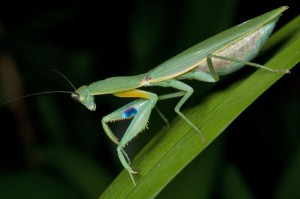
Those bad bugs don’t stand a chance with the praying mantis on the loose. There are about 2,500 species of praying mantis. The praying mantis gets its popular name because of how its two front legs are always bent like they are praying.
The life cycle of the praying mantis consists of three stages: The egg, nymph, and adult stage. These insects can be found mostly in warmer climates.
The majority of these insects can be found in the rainforest. Others can be found in Meadowlands, deserts, and grasslands. The praying mantis can also be purchased online or from your local nursery.
These insects feed on fruit flies, grasshoppers, spiders, whiteflies, moths, crickets, flies, cockroaches, aphids, caterpillars, mosquitoes, beetles, and other soft body insects.
Lacewings
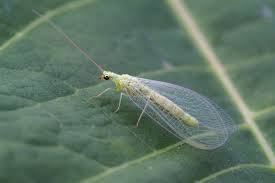
Lacewing insects are another group of insects that you can release into your garden to control bad bugs such as spider mites, caterpillars, citrus mealybugs, aphids, thrips, cottony cushion scales, and other insects. The adult lacewing does not kill other insects but feeds on sweet nectar and pollen.
The lace larva eliminates bad bugs. The adult female lays her eggs on the foliage or leaves then after a few days, the eggs hatch and the larva emerges from the eggs.
Soldier Beetles
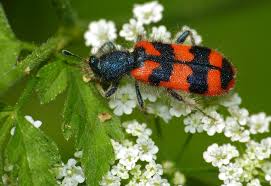
Soldier beetles have a very beautiful color of orange mixed with spots of black. This beetle can be found in your garden feeding on aphids, mealy bugs, caterpillars, whiteflies, and other soft body garden pests but also including sad to say the beneficial insects.
You can check out your local garden nursery for this insect or you can attract them by planting goldenrod or catnip in your garden.
Damsel Bug
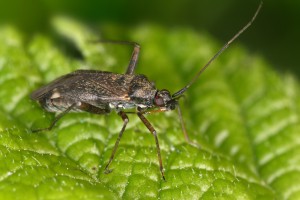
Damsel bugs are another one of the good guys that help to protect our gardens against these outlaw bugs whose only objective is death and destruction. Damsel bugs are a light brownish and white color.
These bugs feed on a host of insects including mealybugs, thrips, leafhoppers, caterpillars, and other soft body insects. They can be collected from alfalfa fields by using a net or you can check your nursery to see if they carry them.
Damsel bugs go through three stages which are egg, nymph, and adult. The eggs are laid in the stem of plants. Damsel bugs eggs hatch soon after they are laid. The nymphs shed their skin several times before entering adulthood.
Assassin bugs
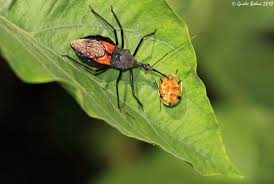
Assassin bugs live up to their names by eliminating the bad bugs. These good guys have no mercy when it comes to the enemy. There are 135 species of assassin bugs worldwide. The male is somewhat large, it has thickened forewings with membranous tips for handling prey. Adults are black, reddish, or brown and have very small eyes. The assassin bug also has long slender legs and a narrow head. The assassin bug uses its needle-like beak to injure its enemy. It then injects a venom that paralyzes its victim. This venom liquefies the internal contents of its prey. The assassin bug then uses its straw-like beak and sucks out the contents.



